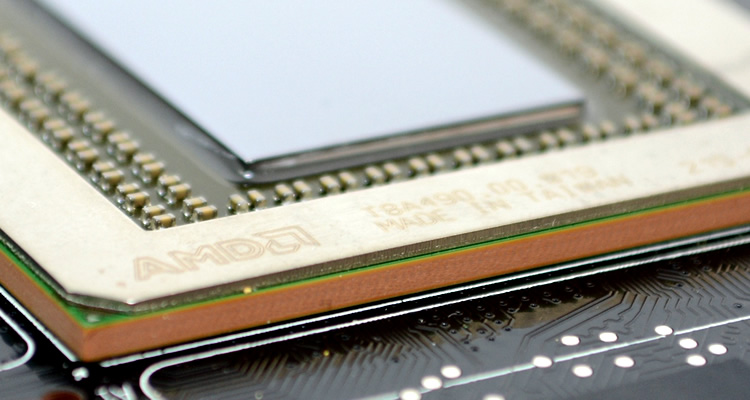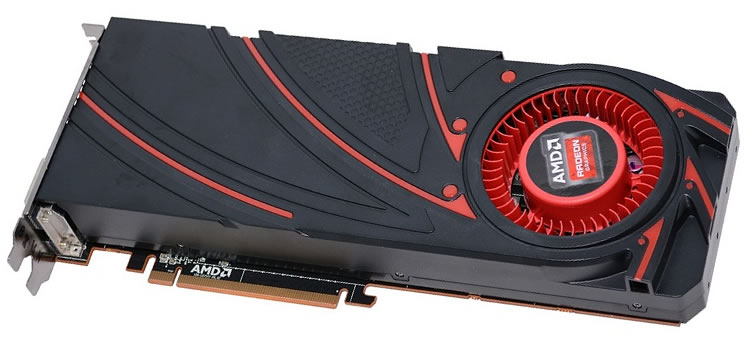The GeForce GTX Titan blew us all away eight months ago with its mindblowingly fast GPU, cramming 7080 million transistors into a 561mm2 die to provide massive processing power and bandwidth. The catch, of course, was that Nvidia wanted (and still wants) $1,000 for it – a sum that didn't necessarily seem to prevent cards from flying off shelves even though it's more than our entire entry-level rig.
Nvidia followed up three months later with the equally impressive GTX 780 for a more plausible $650, where it remains today. Neither of those cards had much of an impact on AMD's sales as the company's most expensive offering at the time was a $450 Radeon HD 7970 GHz Edition (the 7990 arrived a few months later).
Eagerly awaiting AMD's response, we were disappointed that the first run of Rx 200 cards were rebadges. For instance, the R7 260X and R9 270X are the Radeon HD 7790 and 7870 overclocked, while the R9 280X is an underclocked version of the HD 7970 GHz Edition – an equivalency chart can be found in our previous Radeon R7/R9 review. We were less than impressed.
You could easily argue that Nvidia did the same thing with its GTX 770 (a rebadged GTX 680) and the GTX 760 (a rebadged OEM GTX 660), but these products followed the highly impressive GTX 780 and GTX Titan, which were new parts. Moreover, the GTX 770 was not only faster than the GTX 680, but it also arrived with $100 knocked off its price.
Although AMD's new series got off to an underwhelming start, we knew better things would eventually follow, and this week's Radeon R9 290X is the first truly new product of its range. In a sense, the R9 290X (codenamed "Hawaii XT") could be considered AMD's Titan, as it takes the Tahiti architecture and stuffs with nearly 2000 million more transistors.
It's the most complex and powerful GPU AMD has created and by no coincidence, it's also the company's most expensive single-GPU product to date matching the Radeon HD 7970. Before you click away, that's "only" $550, which is substantially cheaper than Nvidia's solution.
The question, of course, is whether the R9 290X can actually keep company with Nvidia's flagships...
Radeon R9 290X in Detail
The R9 290X measures 27.5 cm long (10.8 in), a typical length for a modern high-end graphics card and roughly the same as the original HD 7970. Its GPU core is clocked at 1000MHz, the same frequency as the 7970 GHz Edition, while the GDDR5 memory operates at just 5GHz, 17% slower than the 7970. Still, pairing that frequency with a 512-bit memory bus gives the R9 290X a whopping theoretical bandwidth of 320GB/s, an 11% advantage over the HD 7970 GHz Edition.
While the HD 7970 had a 3GB frame buffer, the R9 290X has been upgraded to 4GB. For the most part, no games will use more than 2 to 3GB of memory at resolutions up to 2560x1600. This means you will need to play on an extreme multi-monitor setup where more than one 290X would be required to provide playable performance and take advantage of the larger memory buffer.
The R9 290X's core configuration also differs from the 7970's. The new card carries an incredible 2816 SPUs, 176 TAUs and 64 ROPs, up 38% from 2048 SPUs and 96 TAUs with 100% more ROPs.
The "Hawaii XT" GPU is cooled by a massive aluminum vapor chamber heatsink with 41 fins measuring 15.0cm long, 8.5cm wide and 2.5cm tall. This is virtually the same cooler AMD used on its reference HD 7970. The vapor chamber design was first implemented by the Radeon HD 5970 and was later adopted by Nvidia's GTX 580. Heat is dispersed by a 75x20mm fan that pulls air in from the case and pushes it out the back.
The R9 290X's fan operates quietly for the most part, but despite the card's impressive idle consumption, it still chugs up to 300 watts under load (20% more than the GTX Titan), so the fan does kick up during a heavy gaming session.
To feed the card enough power, AMD includes 8-pin and 6-pin PCI Express connectors – the same setup you'll find on the HD 7970, GTX 780 and other demanding boards.
Naturally, the R9 290X supports Crossfire, but there are no bridge connectors on this card. This makes the R9 290X the first graphics card to support Crossfire without needing a hardware strap.
The only other connectors are on the I/O panel. Our AMD reference sample has a pair of dual DL-DVI connectors, an HDMI 1.4a port, a DisplayPort 1.2 socket and a dual BIOS switch. The BIOS switch can be found on top of the graphics card and it lets you select between what AMD calls "Quiet Mode" and "Uber Mode".
Speaking of which by default the R9 290X runs in what AMD calls quiet mode, this sets the default maximum fan speed to 40%. However if you want to keep the R9 290X cooler use the Uber mode which sets the default max fan speed to 55%. Of course these options can be further customized in the Catalyst Control panel which now features new OverDrive options.
Due to power and performance being so closely related now the idea with the Uber mode is to keep the R9 290X cooler so it will always perform to its fullest. However in our office which had an ambient room temperature of 21 degrees while testing we saw no difference in performabce between the Uber and Silent modes.
The R9 290X supporrts a max resolution of 2560x1600 on up to three monitors as well as Ultra HD (also known as UHD or 4K) over both HDMI 1.4b (low refresh) and DisplayPort 1.2.
Many Ultra HD/4K monitors can achieve a 60Hz refresh rate using a tiled display configuration. AMD Eyefinity technology can be leveraged to support these tiled displays by making two 2Kx2K tiles act as one 4Kx2K monitor. AMD has taken steps to make this easy for end users by providing an Automatic AMD Eyefinity Configuration feature. This feature allows an automatic "plug and play" configuration of supported Ultra HD/4K tiled displays when a Display Port cable is connected.
When you hot-plug a tiled 4K monitor (such as the Sharp PN-K321 or Asus PQ321Q), a 2x1 display group will be automatically created and the two tiles will be combined to act as one monitor. This configuration will be remembered and re-enabled when the display is unplugged or the system is rebooted.
It is also possible to manually disable the display group in CCC, and have the two tiles act as independent monitors. Additionally, with a multi-stream hub using the mini-DisplayPort 1.2 sockets, the card can power up to six screens.










